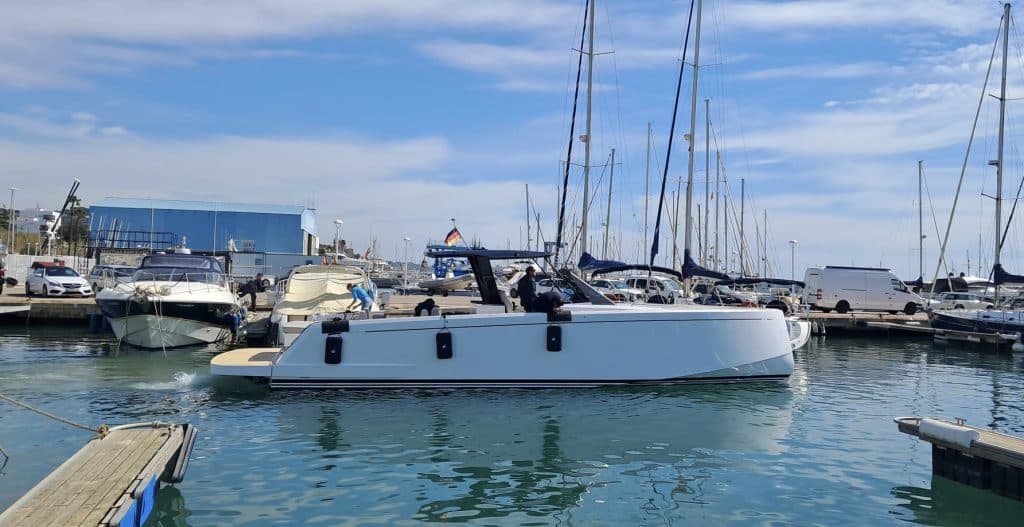If you like sailing, you know how important it is to know and know how to tie a wide variety of knots. A well tied knot can save lives, while a bad knot can have serious consequences.
In this article we will show you the main sailing knots and how to tie them correctly so that you can improve your sailing skills.
What is a sailor’s knot?
A sailor’s knot is a technique for joining two or more ropes together securely and reliably. Knots are used for a variety of purposes, such as securing sails, lashing the boat to the dock, securing cargo or making a rescue rope.
Why seafaring knots are so important for sailing
Seafaring knots are a must for every sailor. Sailors must know how to tie a wide variety of knots to tie and secure different parts of the boat. Without the right knots, a boat could come loose from a dock, lose a sail or even be wrecked.
In addition, seafarers’ knots are essential for the safety of the crew, as they enable them to secure objects and people to prevent accidents.

Why is it necessary to learn how to tie seafaring knots?
It is important to learn seafarers’ knots because they are an essential part of navigation. Not only are they necessary for the safety of the crew and the protection of the boat, but they are also a key element in effective navigation and in performing everyday tasks.
Below we are going to go over some of the most useful sailor’s knots for sailing and how to tie them correctly.
1. Knot of Eight
The figure-eight knot is one of the most basic and common knots. It is very easy to tie and is used to attach a rope to an object or to join two ropes of equal diameter.
To tie the figure-eight knot, follow these steps:
- Make a loop in the rope.
- Pass the end of the rope through the loop and make a full turn.
- Pass the end of the rope through the loop again.
- Pull the ends of the rope to tighten the knot.
2. Ballestrinque knot
The ballastree knot is very useful for joining two ropes of different diameters or for attaching a rope to an object, such as a ring or a post. This knot is very strong and does not slip easily.
To tie a ballista knot, follow these steps:
- Pass the rope around the object and make a loop.
- Pass the end of the rope through the loop from below.
- Make a second loop around the object and pass the end of the rope through the loop from above.
- Pull on the ends of the rope to tighten the knot.
3. Ace of Guide Knot
The Guide Ace knot is very useful for securing a rope to an object, such as a post or a ring. This knot is easy to tie and very secure.
To tie the Ace Knot, follow these steps:
- Make one loop in the rope.
- Make a second loop in the rope above the first loop.
- Pass the end of the rope over the second loop.
- Pass the end of the rope under the first loop.
- Pull the ends of the rope together to tighten the knot.
4. Back Loop Knot
The grapnel loop is a very useful knot for securing a rope to an object temporarily. This knot is often used to secure the sheet of a sail or to secure an object on board.
To tie a grapnel loop, follow these steps:
- Go around the object with the rope.
- Pass the end of the rope over the loop you have just made.
- Pass the end of the rope underneath the turn you have just made.
- Pass the end of the rope over the turn you just made again.
- Pull on the ends of the rope to tighten the knot.
Tips on how to learn to tie a sailor’s knot
Learning the knots can be a challenge, but with practice and patience everyone can master them. Here are some tips to help you improve your sailing skills:
- Practice with different types of ropes and knots to increase your skills.
- Use online tutorials or instruction manuals to learn new knots.
- Repeat the knots over and over until they feel natural.
- Make sure the knots are tight and secure before you go sailing.
- Practice the knots in different weather conditions so that you are prepared for any situation.
Now that we are clear on how to tie some of the most commonly used knots, let’s dive into some of the most frequently asked questions.
How many knots do I need to know for sailing?
In addition to the basic knots discussed above, it is recommended that sailors learn more advanced knots according to their specific needs.
It is important that sailors practice these knots regularly to ensure that they are prepared for any situation.
What type of rope is best for making sailor’s knots for sailing?
Nylon or polyester ropes are ideal for making marine knots due to their strength and durability. These materials are capable of withstanding large amounts of tension and do not degrade easily when exposed to salt water or the sun’s UV rays.
In addition, another positive factor of these ropes is that they have good flexibility and are easy to handle, which facilitates the tying of knots.
In short, sea knots are a crucial skill for safe navigation on the water. Constant practice of these knots and their application in sailing situations can make the difference between a successful experience and a risky situation.







